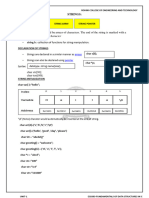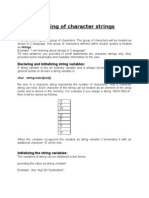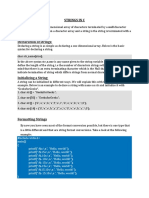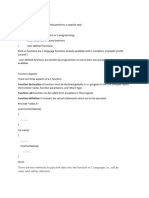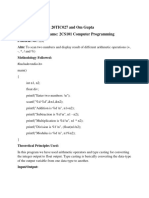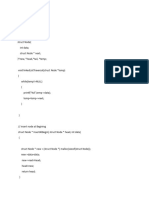0% found this document useful (0 votes)
3 views21 pagesUnit 4 Notes
The document provides an overview of strings and user-defined data types in C, including string handling operations, manipulations, and examples of using structures and unions. It explains how to declare, initialize, and manipulate strings, as well as how to define and access structures and unions. Additionally, it highlights the differences between structures and unions in terms of memory allocation and member access.
Uploaded by
kanimozhiCopyright
© © All Rights Reserved
We take content rights seriously. If you suspect this is your content, claim it here.
Available Formats
Download as PDF, TXT or read online on Scribd
0% found this document useful (0 votes)
3 views21 pagesUnit 4 Notes
The document provides an overview of strings and user-defined data types in C, including string handling operations, manipulations, and examples of using structures and unions. It explains how to declare, initialize, and manipulate strings, as well as how to define and access structures and unions. Additionally, it highlights the differences between structures and unions in terms of memory allocation and member access.
Uploaded by
kanimozhiCopyright
© © All Rights Reserved
We take content rights seriously. If you suspect this is your content, claim it here.
Available Formats
Download as PDF, TXT or read online on Scribd
/ 21














